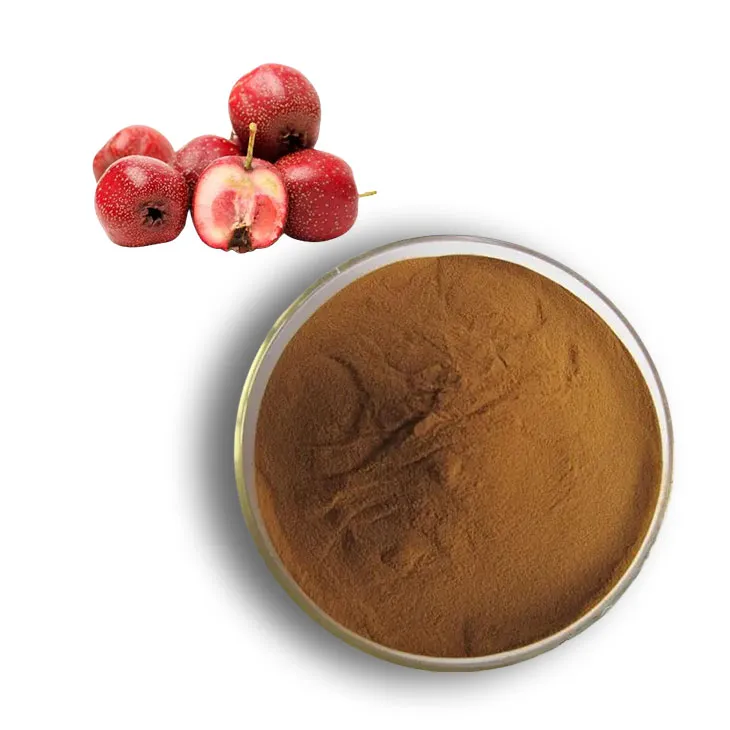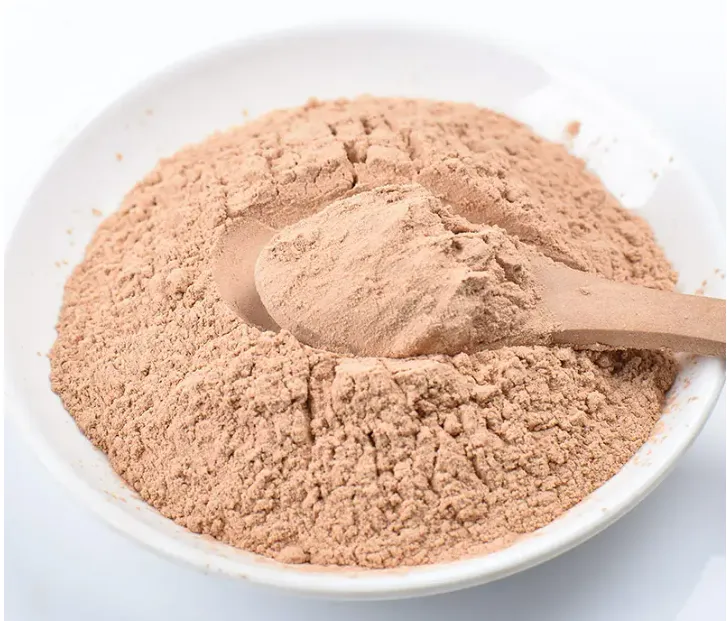- 0086-571-85302990
- sales@greenskybio.com
Standard - process hawthorn extract.
2024-11-26

1. Introduction
Hawthorn, a common plant in many parts of the world, has been used in traditional medicine for centuries. The Hawthorn Extract made with standard procedures is gaining increasing attention in the health products industry. Standardization in the production process is crucial as it ensures the quality, purity, and consistency of the extract. This extract has a wide range of potential health benefits, which makes it a valuable ingredient in various products.

2. The Production Process of Standard - process Hawthorn Extract
2.1 Raw Material Selection
The first step in the production of standard - process Hawthorn Extract is the careful selection of raw materials. High - quality hawthorn fruits are chosen, typically those that are ripe and free from diseases and pests. The origin of the hawthorn also plays an important role, as different regions may produce hawthorn with slightly different characteristics. For example, hawthorn grown in certain areas may have a higher content of active ingredients.
2.2 Cleaning and Preparation
Once the raw materials are selected, the hawthorn fruits need to be thoroughly cleaned. This is to remove any dirt, debris, or pesticides that may be present on the surface. After cleaning, the fruits are usually dried to a certain extent. This drying process helps in the subsequent extraction steps. Some producers may also remove the seeds and stems at this stage to ensure a more pure extract in the end.
2.3 Extraction Methods
There are several methods for extracting the active ingredients from hawthorn fruits:
- Solvent Extraction: This is one of the most common methods. Organic solvents such as ethanol are often used. The hawthorn fruits are soaked in the solvent for a period of time, allowing the active ingredients to dissolve into the solvent. Then, through a series of separation and purification steps, the solvent is removed, leaving behind the hawthorn extract.
- Supercritical Fluid Extraction: This method uses supercritical fluids, usually carbon dioxide. Supercritical carbon dioxide has properties between a gas and a liquid, which allows it to penetrate the hawthorn fruits effectively and extract the active ingredients. This method is considered more environmentally friendly as it does not leave behind solvent residues.
- Water - based Extraction: In some cases, water can be used as an extraction medium. Although this method is relatively simple and safe, the extraction efficiency may be lower compared to solvent - based methods. However, it is suitable for producing extracts that are intended for use in food and beverage products where the use of organic solvents is restricted.
2.4 Purification and Concentration
After the extraction, the obtained extract usually contains impurities. Purification steps are necessary to remove these impurities. This can be achieved through filtration, centrifugation, or chromatography techniques. Once purified, the extract may be concentrated to increase the content of active ingredients. Concentration is often carried out under controlled conditions to ensure that the quality of the extract is not affected.
2.5 Quality Control
Throughout the production process, strict quality control measures are implemented. This includes testing the raw materials, intermediate products, and the final extract for various parameters such as the content of active ingredients, purity, and microbiological safety. For example, high - performance liquid chromatography (HPLC) is often used to analyze the content of flavonoids and other bioactive compounds in the hawthorn extract. Only products that meet the established quality standards are allowed to be released to the market.

3. Health Benefits of Hawthorn Extract
3.1 Cardiovascular Protection
Hawthorn extract has been shown to have significant benefits for cardiovascular health. It can help in reducing blood pressure. The active ingredients in the extract, such as flavonoids, may act on the blood vessels, causing them to relax and thus reducing the resistance in the blood vessels. This leads to a decrease in blood pressure. Additionally, hawthorn extract can also improve the function of the heart muscle. It can enhance the contractility of the heart, which is beneficial for patients with heart failure. Studies have indicated that regular consumption of hawthorn extract may help in reducing the risk of heart diseases.
3.2 Digestive Function Improvement
Another important aspect of hawthorn extract's health benefits is its impact on digestive function. It can stimulate the secretion of digestive enzymes in the stomach and intestines. This helps in the breakdown of food, improving digestion and absorption. Hawthorn extract may also have a mild laxative effect, which can prevent constipation. For those with digestive problems such as indigestion or bloating, hawthorn extract can be a natural remedy.
3.3 Antioxidant and Anti - inflammatory Effects
The flavonoids and other bioactive compounds in hawthorn extract possess strong antioxidant properties. They can scavenge free radicals in the body, which are known to cause damage to cells and contribute to various diseases such as cancer and aging - related diseases. Moreover, hawthorn extract also has anti - inflammatory effects. It can inhibit the production of inflammatory mediators in the body, reducing inflammation. This makes it potentially useful in the treatment of inflammatory diseases such as arthritis.

4. Applications of Hawthorn Extract
4.1 In Medicine
In the field of medicine, hawthorn extract is used in various forms. It can be formulated into tablets, capsules, or tinctures for oral administration. In some cases, it may also be used in injectable formulations, although this is less common. Hawthorn extract is often prescribed for patients with cardiovascular diseases, such as hypertension, coronary heart disease, and heart failure. It can be used alone or in combination with other medications to enhance the treatment effect.
4.2 In Food and Beverage
Hawthorn extract is widely used in the food and beverage industry:
- It can be added to fruit juices, giving the juice a unique flavor and also providing additional health benefits. For example, hawthorn - flavored juices are popular in many markets.
- In the production of functional foods, such as energy bars or dietary supplements, hawthorn extract can be incorporated to enhance the product's health - promoting properties.
- Some tea products also contain hawthorn extract. Hawthorn tea has a pleasant taste and is believed to have digestive and cardiovascular benefits.
4.3 In Cosmetics
Due to its antioxidant and anti - inflammatory properties, hawthorn extract is finding its way into the cosmetics industry. It can be added to skin creams, lotions, and serums. In these products, hawthorn extract can help in protecting the skin from oxidative damage, reducing inflammation, and improving skin elasticity. It may also be used in hair care products, as it can nourish the hair follicles and promote healthy hair growth.
5. Market Opportunities and Challenges for Hawthorn Extract
5.1 Opportunities
There are several opportunities for the hawthorn extract market:
- The increasing awareness of natural health products among consumers provides a large potential market for hawthorn extract. People are more inclined to choose natural remedies over synthetic drugs, and hawthorn extract fits well into this trend.
- The expanding applications in different industries, such as food, beverage, and cosmetics, open up new markets for hawthorn extract. As the demand for functional and healthy products grows, hawthorn extract can be incorporated into a wide range of products.
- Research on hawthorn extract is still ongoing, and new health benefits may be discovered in the future. This could further increase the market demand for hawthorn extract.
5.2 Challenges
However, the hawthorn extract market also faces some challenges:
- Quality control remains a major issue. Due to the lack of uniform international standards in some cases, there may be variations in the quality of hawthorn extract products on the market. This can lead to consumer confusion and mistrust.
- Competition from other natural health products is intense. There are many other plants and substances with similar health - promoting properties, and hawthorn extract needs to compete with them for market share.
- The extraction and production process of hawthorn extract can be complex and costly. This may limit the production scale and increase the price of the final product, making it less competitive in the market.
6. Conclusion
Hawthorn extract made with standard procedures has great potential in the health products industry. Its production process, which emphasizes standardization, ensures its quality, purity, and consistency. With its multiple health benefits and wide applications in medicine, food and beverage, and cosmetics, it has both opportunities for growth and challenges to overcome in the market. Continued research and strict quality control will be key to the future development of the hawthorn extract industry.
FAQ:
What are the main steps in the standard process of hawthorn extract?
The standard process of hawthorn extract typically involves several main steps. First, high - quality hawthorn fruits are selected. Then, they are cleaned thoroughly to remove impurities. Next, extraction methods such as solvent extraction are often used. After that, purification steps are carried out to remove unwanted substances. Finally, the extract is concentrated and dried to obtain the final hawthorn extract product.
How does the standard - process hawthorn extract contribute to cardiovascular protection?
The standard - process hawthorn extract can contribute to cardiovascular protection in multiple ways. It may contain bioactive compounds such as flavonoids. These compounds can help in reducing blood lipid levels, for example, lowering cholesterol. They also have the potential to dilate blood vessels, improving blood circulation and reducing the risk of heart diseases.
What are the quality control measures in the standard production process of hawthorn extract?
In the standard production process of hawthorn extract, quality control measures are crucial. Raw material inspection is the first step to ensure the quality of the hawthorn fruits used. During the extraction and purification processes, parameters such as temperature, pressure, and solvent concentration are closely monitored. Analytical techniques like chromatography are often used to test the purity and composition of the extract at different stages. Finally, the finished product is also tested for quality and safety according to relevant standards.
How is the standard - process hawthorn extract used in the food and beverage industry?
In the food and beverage industry, the standard - process hawthorn extract is used in various ways. It can be added to juices, teas, and other beverages to enhance flavor. It also provides certain health benefits, such as improving digestion, which makes it an attractive ingredient for functional foods. Some confectionery products may also contain hawthorn extract for its unique taste and potential health - promoting properties.
What are the challenges faced by the standard - process hawthorn extract in the market?
The standard - process hawthorn extract faces several challenges in the market. One challenge is competition from other natural extracts and synthetic alternatives. There may also be issues related to consumer awareness, as not all consumers are fully aware of the benefits of hawthorn extract. Additionally, regulatory requirements in different regions can pose challenges for its marketing and distribution.
Related literature
- Standardization of Hawthorn Extract Production"
- "The Quality Control of Standard - Processed Hawthorn Extract"
- "Applications of Hawthorn Extract in Health - related Industries"
- ▶ Hesperidin
- ▶ citrus bioflavonoids
- ▶ plant extract
- ▶ lycopene
- ▶ Diosmin
- ▶ Grape seed extract
- ▶ Sea buckthorn Juice Powder
- ▶ Beetroot powder
- ▶ Hops Extract
- ▶ Artichoke Extract
- ▶ Reishi mushroom extract
- ▶ Astaxanthin
- ▶ Green Tea Extract
- ▶ Curcumin Extract
- ▶ Horse Chestnut Extract
- ▶ Other Problems
- ▶ Boswellia Serrata Extract
- ▶ Resveratrol Extract
- ▶ Marigold Extract
- ▶ Grape Leaf Extract
- ▶ blog3
- ▶ blog4
-
100% Pure Natural Vitamin B9 Powder.
2024-11-26
-
Chinese Lemon Balm Extract Manufacturers.
2024-11-26
-
China Honeysuckle Pollen Factory.
2024-11-26
-
Longan Extract
2024-11-26
-
Citrus Aurantii Extract
2024-11-26
-
Mulberry Extract
2024-11-26
-
Acerola Juice Powder
2024-11-26
-
Aminolevulinic acid
2024-11-26
-
Grapefruit Seed Extract Powder
2024-11-26
-
Golden Seal Extract
2024-11-26
-
Dandelion Leaf Extract
2024-11-26
-
Maca Extract
2024-11-26
-
Epimedium extract powder
2024-11-26





















